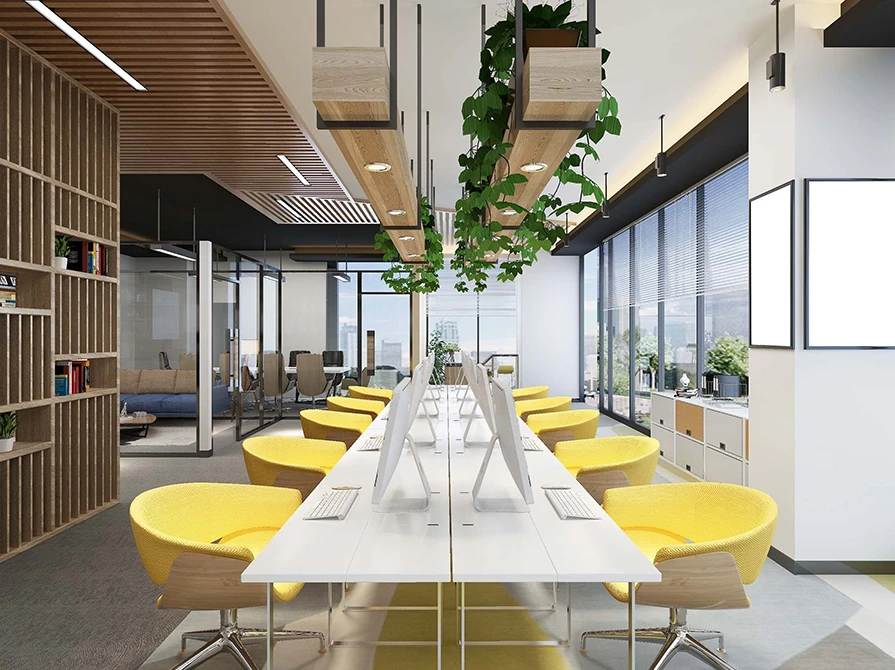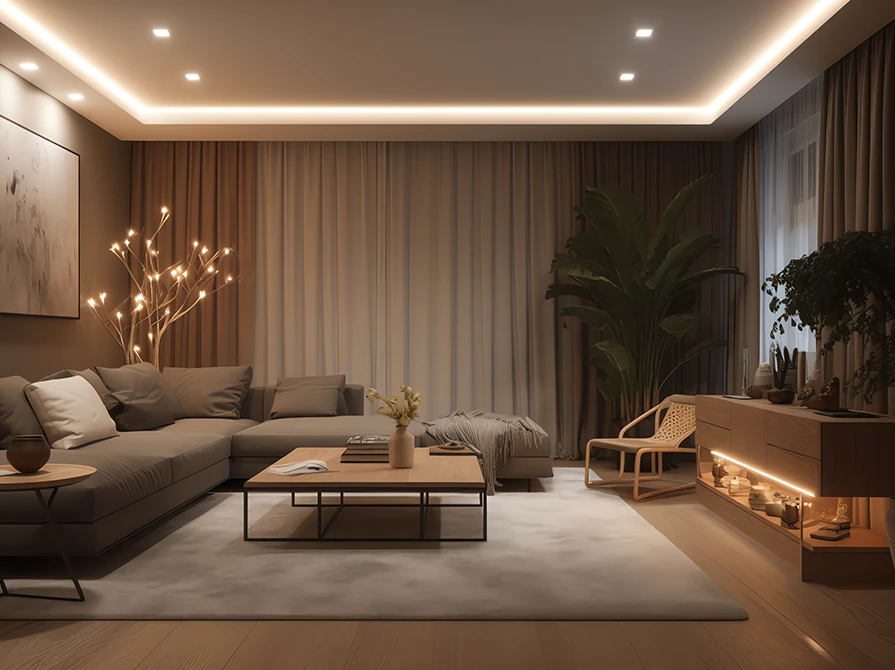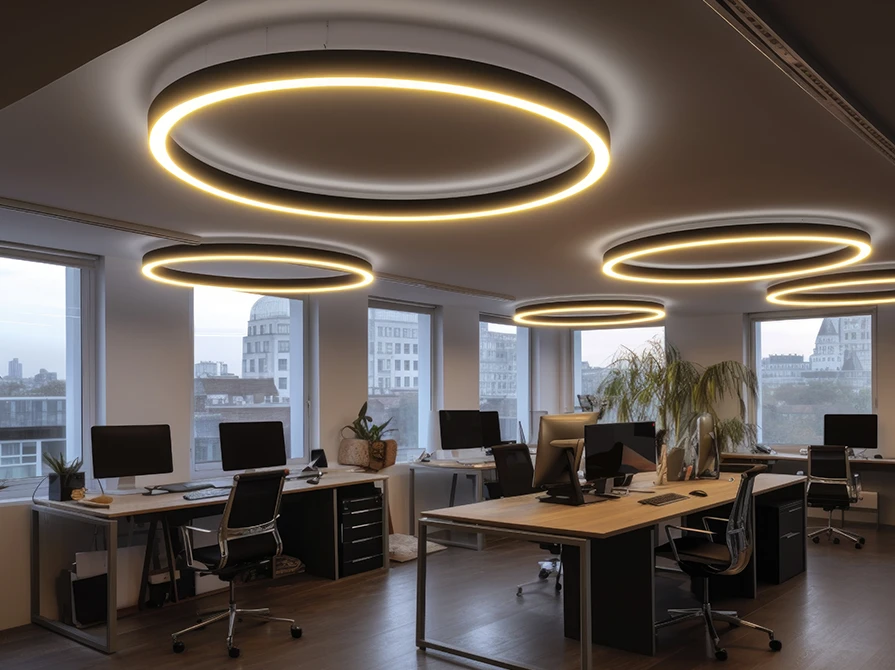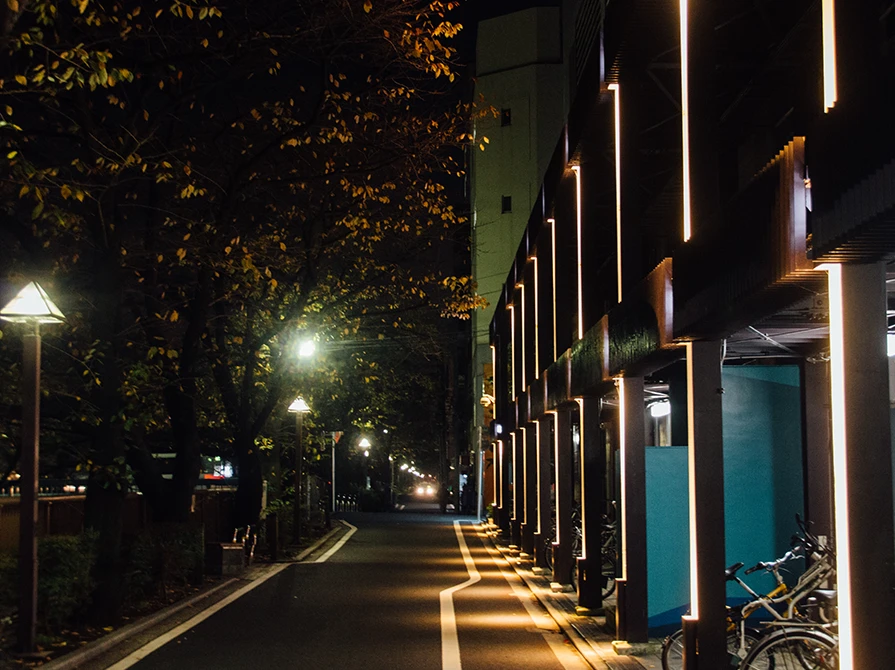

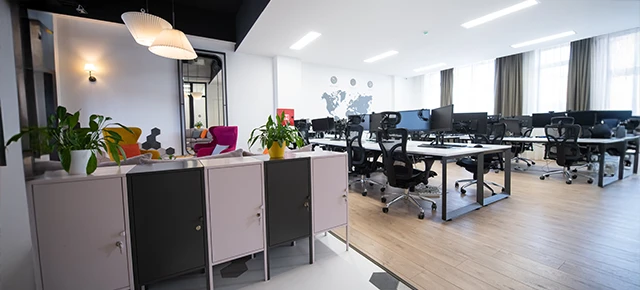
When it comes to designing workspaces, it’s important to create an environment that is conducive to productivity and keeps your workforce engaged. Layout, furniture and lighting are some of the elements that play a major role in creating a high-performance workspace design. Adequate lighting not only enhances visibility but also has a significant impact on employee well-being, focus, and overall performance. To achieve optimal lighting conditions, it's important to understand and implement the recommended lux levels in workspaces. In this blog, we will explore what lux levels are, why they are important, and some practical tips to achieve the ideal lighting in your workplace.
Lux is a unit of measurement that quantifies the amount of light falling on a surface. Lux levels indicate the brightness or intensity of light in a given area. The recommended lux levels for modern office lighting are determined based on factors such as the nature of work, task requirements, and the overall visual comfort needed for the occupants.
Maintaining the appropriate lux levels in workspaces is crucial for several reasons. It ensures optimal visibility, reducing eye strain and fatigue among employees. Proper lighting also enhances concentration and productivity, as well as reducing the likelihood of errors and accidents. In addition to this, adequate lighting contributes to the overall comfort levels of employees, positively impacting their mood and job satisfaction.
General Office Areas: For general office spaces where tasks involve reading, writing, and computer work, a recommended lux level of 300 to 500 lux is suitable. This range provides a comfortable and well-lit environment for daily office tasks.
Meeting Rooms and Conference Areas: These areas require higher lux levels, typically ranging from 500 to 750 lux. These spaces often involve collaborative work, presentations, and discussions, where increased visibility and focus are essential.
Reception and Entrance Areas: These areas are the first impression visitors have of your workspace. Aim for a lux level of around 200 to 300 lux in these areas to create a welcoming and visually appealing ambiance.
Workstations and Task-Oriented Areas: In areas that involve intricate tasks or detailed work, such as design studios or laboratories, lux levels should be higher. Recommended levels typically range from 500 to 1000 lux, depending on the specific tasks performed.
Natural Light: Whenever possible, maximize the use of natural light by positioning workstations near windows or using glass partitions to allow light to penetrate deeper into the workspace. Natural light not only provides the necessary illumination but also offers the added benefits of improved mood and well-being.
Artificial Lighting: Supplement natural light with appropriate artificial lighting sources. Use a combination of general lighting fixtures, such as ceiling lights, and task lighting, such as desk lamps, to provide adequate illumination and flexibility for different tasks and activities.
Lighting Control: Implement lighting control systems, such as dimmers or sensors, to adjust the intensity of artificial lighting based on the availability of natural light and specific needs throughout the day. This helps to maintain consistent and appropriate lighting levels while reducing energy consumption.
Regular Maintenance: Inspect and maintain LED office lighting fixtures on a regular basis to ensure optimal performance. Clean light fixtures, replace faulty bulbs, and address any lighting-related issues promptly to maintain recommended lux levels in the workspace.
Understanding and implementing the recommended lux levels in workspaces can help you create a well-lit environment that promotes productivity, comfort, and employee well-being. Consider the specific requirements of different areas within your workspace and implement appropriate lighting solutions. With the right lighting design, you can transform your workspace into an inspiring and efficient environment that supports the success of your employees and your business.
